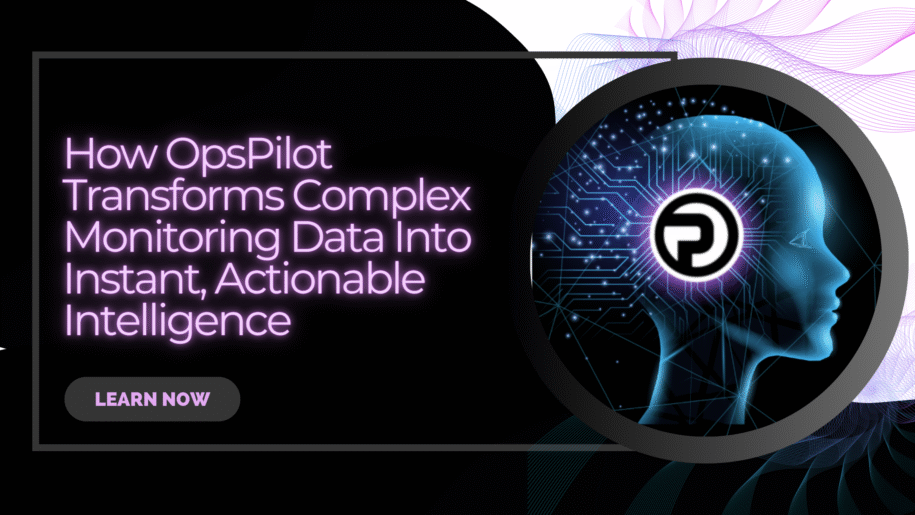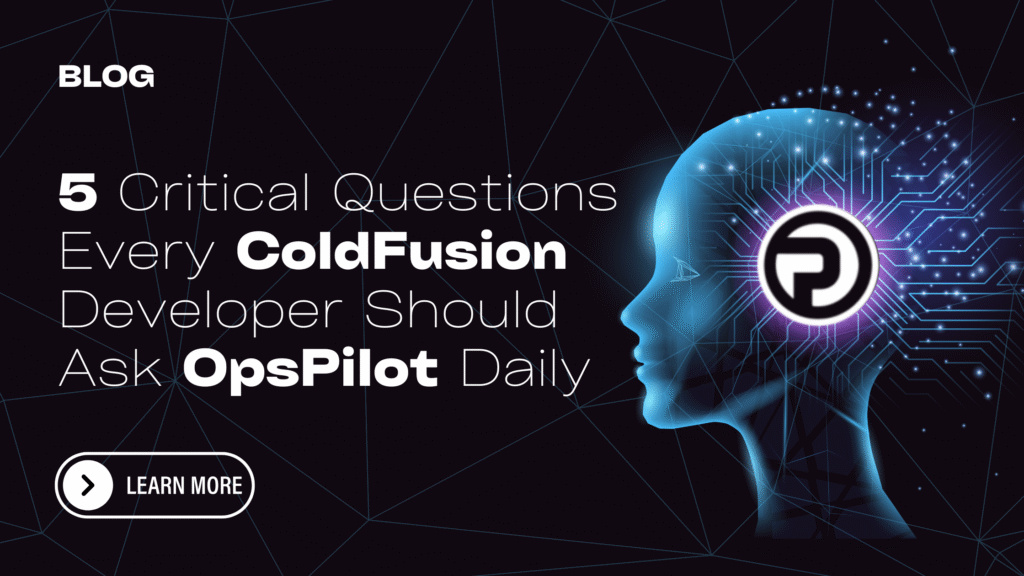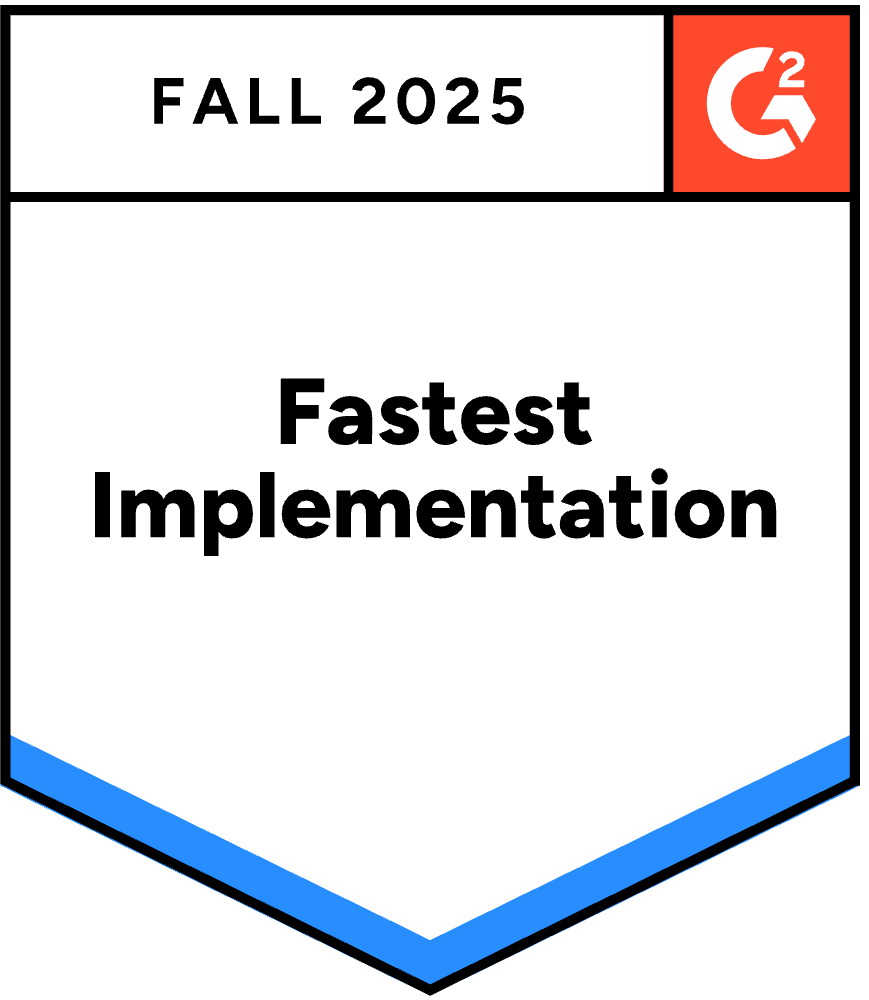Let me share a powerful demonstration of how OpsPilot, FusionReactor’s AI-powered observability assistant, is revolutionizing the way teams interact with their monitoring data. What you’re about to see isn’t a carefully crafted demo – it’s real questions from a real user getting comprehensive, actionable answers about their production environment.
The Challenge Every DevOps Team Faces
Picture this familiar scenario: It’s 2 PM on a Tuesday. Your monitoring dashboards show dozens of metrics across multiple services. Logs are streaming in by the thousands. Your team is asking critical questions:
- “Are our scheduled tasks actually running?”
- “Why is the JVM using so much memory?”
- “Which external service is causing those timeouts?”
- “Is our disk I/O becoming a bottleneck?”
Traditionally, answering these questions meant diving into multiple dashboards, correlating timestamps across different tools, writing complex queries, and often calling in that one senior engineer who “knows where to look.” Even then, a thorough investigation could take hours.
What if you could get comprehensive answers in just minutes?
Real-World OpsPilot in Action
Recently, we captured a series of interactions between a user and OpsPilot that perfectly demonstrate how this AI-powered assistant transforms the observability experience. The user asked four simple questions in natural language. OpsPilot took about 2 minutes per question to perform a thorough investigation across all available data sources – and delivered insights that would typically take hours of manual analysis.
Question 1: “Did any scheduled tasks fail in the last 6 hours?”
In just 2 minutes of analysis, OpsPilot delivered a complete investigation:
- ✅ Definitive answer: Yes – the removeoldquotes task failed multiple times
- 🕒 Precise timeline: Failures at 07:46:14 and 08:20:59 UTC
- 🔍 Root cause identified: MySQL communications failures (connection refused/read timeout)
- 📊 Pattern detection: Multiple related failures including emailquote.cfm tasks
- 💡 Five specific recommendations: From MySQL availability checks to retry logic implementation
The comparison? Manually searching through 6 hours of logs across multiple services, identifying which errors relate to scheduled tasks versus regular operations, and correlating database errors with task failures would typically take 45-60 minutes. OpsPilot provided a complete audit trail with timestamps and stack traces in 2 minutes.
Question 2: “How is my overall JVM performance?”
OpsPilot’s 2-minute deep dive delivered:
- 📊 Complete JVM health assessment across all services
- ❌ Critical finding: Quote Service experiencing 12.4% CPU spikes
- ⚠️ Memory pressure patterns showing 200-829MB swings
- 🎯 Specific GC tuning recommendations for the problematic service
The impact? What makes this remarkable isn’t just the speed – it’s the depth. OpsPilot correlated memory allocation patterns with CPU spikes and GC activity across multiple services. This level of cross-service analysis typically requires a senior performance engineer spending 2-3 hours with profiling tools.
Question 3: “Are my external service calls healthy?”
In another 2-minute investigation, OpsPilot revealed:
- ❌ Critical: 5% of checkout API calls failing with 504 timeouts
- ⚠️ Feature flag service consistently taking 5 seconds to respond
- 📈 Complete breakdown of success rates by endpoint and method
- 🔧 Specific timeout pattern: failures every ~4 minutes at exactly 15 seconds
The discovery? OpsPilot identified a configuration issue causing consistent upstream timeouts – a pattern that would require manually correlating logs from multiple services over several hours to spot.
Question 4: “Is my file I/O performing well?”
OpsPilot’s comprehensive 2-minute analysis confirmed:
- ✅ Excellent performance with <3% disk utilization
- ✅ Healthy filesystem space (30-67% available)
- ✅ Zero I/O errors across all systems
- 📊 Complete performance baseline for future comparison
The value? Even this “all clear” result saved significant time – manually verifying healthy I/O performance across all systems would take at least 30 minutes.
The Technical Intelligence Behind OpsPilot
What makes OpsPilot’s 2-minute analyses so powerful is the sheer volume of data it processes and correlates:
1. Comprehensive Data Analysis
In those 2 minutes, OpsPilot:
- Queries thousands of metrics data points
- Scans relevant log entries across multiple services
- Correlates trace data to understand service interactions
- Analyzes patterns over different time windows
- Identifies anomalies and trends
2. Intelligent Correlation
OpsPilot doesn’t just collect data – it understands relationships:
- Database timeouts affecting scheduled task completion
- Memory pressure triggering GC activity causing CPU spikes
- Service dependencies impacting external call performance
- Systemic patterns vs. isolated incidents
3. Contextual Understanding
OpsPilot knows that:
- 5000ms response times for feature flags are problematic
- 16ms for frontend GETs is excellent
- 3% disk utilization is healthy
- 30% free disk space provides adequate buffer
This contextual intelligence comes from understanding normal operating parameters for different types of services and infrastructure components.
The Real-World Impact: 8 Minutes vs. 8 Hours
Let’s do the math on the four questions above:
With OpsPilot:
- 4 questions × 2 minutes = 8 minutes total
- 1 engineer required
- Comprehensive analysis across all data sources
- Actionable recommendations included
Traditional Approach:
- Scheduled tasks investigation: 45-60 minutes
- JVM performance analysis: 2-3 hours
- External service troubleshooting: 2-3 hours
- I/O performance verification: 30 minutes
- Total: 5-7 hours minimum
- Multiple engineers potentially required
- Risk of missing correlations between issues
But here’s the crucial difference: OpsPilot’s 2-minute analyses are thorough. It’s not cutting corners or providing surface-level insights. It’s performing the same comprehensive investigation a senior engineer would conduct, just dramatically faster.
Why 2 Minutes Is Actually Impressive
Some might wonder: “Why does it take 2 minutes?” Consider what OpsPilot accomplishes in that time:
- Processes gigabytes of telemetry data across metrics, logs, and traces
- Applies machine learning models to identify anomalies and patterns
- Correlates events across multiple services and time windows
- Generates human-readable explanations with specific evidence
- Formulates actionable recommendations based on best practices
This isn’t a simple database query – it’s intelligent analysis at scale. The fact that OpsPilot can perform this level of investigation in 2 minutes represents a massive acceleration in troubleshooting capability.
Beyond Speed: The Quality of Insights
The 2-minute investment delivers insights that go beyond what many teams achieve even with hours of investigation:
Multi-dimensional Analysis: OpsPilot simultaneously considers infrastructure metrics, application performance, and business logic.
Pattern Recognition: Identifies subtle patterns like “timeouts every 4 minutes at exactly 15 seconds” that humans might miss.
Root Cause Correlation: Connects symptoms across different layers of the stack to identify true root causes.
Prioritized Recommendations: Not just identifying problems, but providing specific, actionable fixes prioritized by impact.
The Evolution of Observability
What you’ve seen here represents a fundamental shift in how teams interact with observability data:
Traditional Approach: Hours of manual investigation → Maybe find the issue → Hope you didn’t miss anything
OpsPilot Approach: Ask a question → 2-minute comprehensive analysis → Get actionable insights with evidence
This isn’t about replacing engineers – it’s about amplifying their capabilities. Instead of spending hours on investigation, they can focus on solving problems and improving systems.
Experience OpsPilot With Your Own Systems
OpsPilot is included with FusionReactor Cloud, providing:
- Natural language queries with 2-minute comprehensive analysis
- Investigation across metrics, logs, and traces simultaneously
- Pattern recognition and anomaly detection
- Actionable recommendations based on best practices
- Integration with your existing workflow tools
The questions shown here are just the beginning. Whether you’re investigating incidents, optimizing performance, or conducting health checks, OpsPilot delivers thorough analysis in minutes, not hours.
See the difference 2 minutes can make. Start your free FusionReactor trial today and experience how OpsPilot transforms your approach to system observability and troubleshooting.
In the world of incident response and performance optimization, every minute counts. OpsPilot, the AI-powered observability assistant, ensures those minutes deliver maximum insight and value.
Start Your Free Trial | Schedule a Demo | Learn More About OpsPilot












